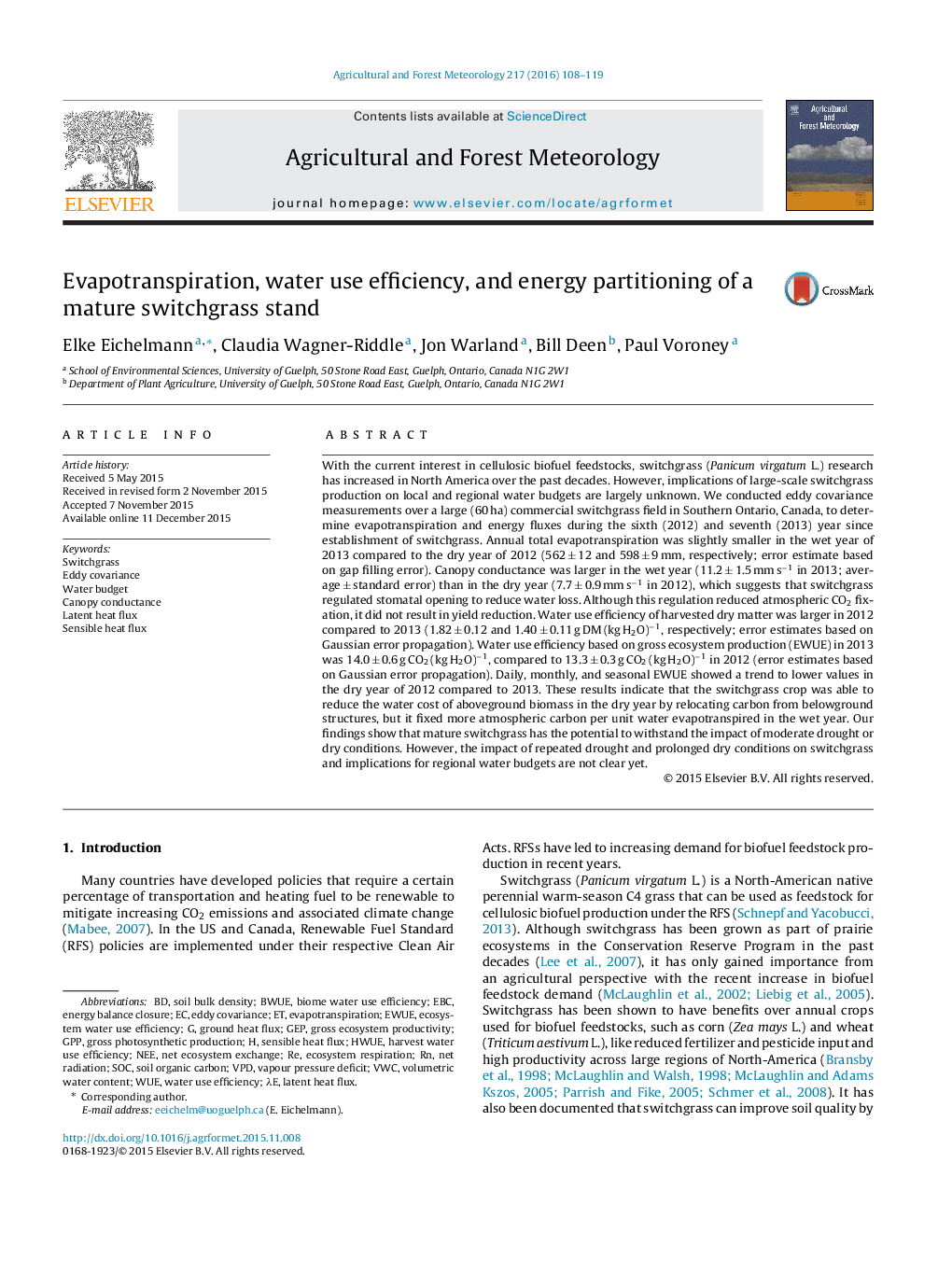| کد مقاله | کد نشریه | سال انتشار | مقاله انگلیسی | نسخه تمام متن |
|---|---|---|---|---|
| 81396 | 158314 | 2016 | 12 صفحه PDF | دانلود رایگان |
• We conducted eddy covariance measurements over mature switchgrass for two years.
• The first year experienced moderate drought during part of the growing season.
• Switchgrass produced more biomass but fixed less CO2 per water use in the dry year.
• Use of belowground carbon reduced water cost of aboveground biomass production.
• Switchgrass did not show typical signs of drought impact in the dry year.
With the current interest in cellulosic biofuel feedstocks, switchgrass (Panicum virgatum L.) research has increased in North America over the past decades. However, implications of large-scale switchgrass production on local and regional water budgets are largely unknown. We conducted eddy covariance measurements over a large (60 ha) commercial switchgrass field in Southern Ontario, Canada, to determine evapotranspiration and energy fluxes during the sixth (2012) and seventh (2013) year since establishment of switchgrass. Annual total evapotranspiration was slightly smaller in the wet year of 2013 compared to the dry year of 2012 (562 ± 12 and 598 ± 9 mm, respectively; error estimate based on gap filling error). Canopy conductance was larger in the wet year (11.2 ± 1.5 mm s−1 in 2013; average ± standard error) than in the dry year (7.7 ± 0.9 mm s−1 in 2012), which suggests that switchgrass regulated stomatal opening to reduce water loss. Although this regulation reduced atmospheric CO2 fixation, it did not result in yield reduction. Water use efficiency of harvested dry matter was larger in 2012 compared to 2013 (1.82 ± 0.12 and 1.40 ± 0.11 g DM (kg H2O)−1, respectively; error estimates based on Gaussian error propagation). Water use efficiency based on gross ecosystem production (EWUE) in 2013 was 14.0 ± 0.6 g CO2 (kg H2O)−1, compared to 13.3 ± 0.3 g CO2 (kg H2O)−1 in 2012 (error estimates based on Gaussian error propagation). Daily, monthly, and seasonal EWUE showed a trend to lower values in the dry year of 2012 compared to 2013. These results indicate that the switchgrass crop was able to reduce the water cost of aboveground biomass in the dry year by relocating carbon from belowground structures, but it fixed more atmospheric carbon per unit water evapotranspired in the wet year. Our findings show that mature switchgrass has the potential to withstand the impact of moderate drought or dry conditions. However, the impact of repeated drought and prolonged dry conditions on switchgrass and implications for regional water budgets are not clear yet.
Journal: Agricultural and Forest Meteorology - Volume 217, 15 February 2016, Pages 108–119
